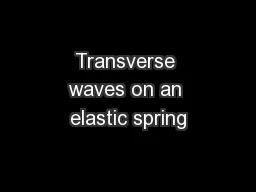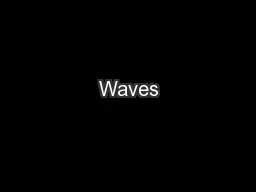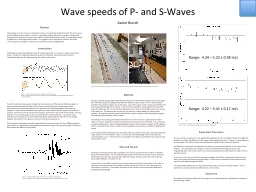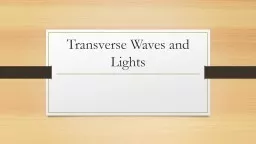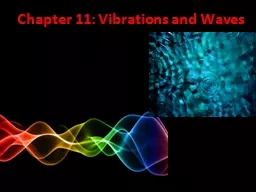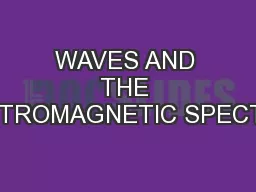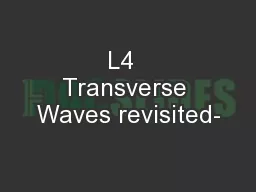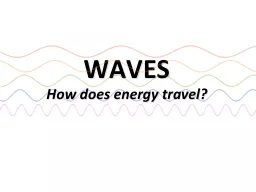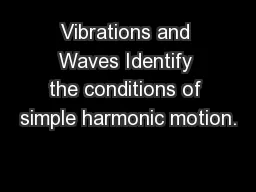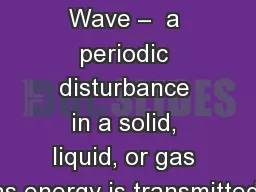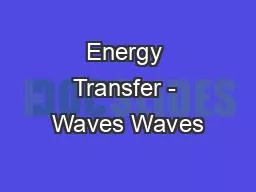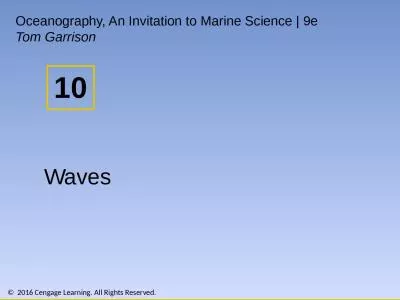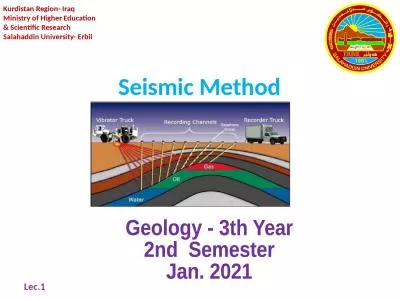PPT-Transverse waves on an elastic spring
Author : kittie-lecroy | Published Date : 2017-06-24
What happens when a a short pulse is flicked down a long taut spring It keeps its shape but gets smaller the farther it goes It keeps its shape and stays
Presentation Embed Code
Download Presentation
Download Presentation The PPT/PDF document "Transverse waves on an elastic spring" is the property of its rightful owner. Permission is granted to download and print the materials on this website for personal, non-commercial use only, and to display it on your personal computer provided you do not modify the materials and that you retain all copyright notices contained in the materials. By downloading content from our website, you accept the terms of this agreement.
Transverse waves on an elastic spring: Transcript
Download Rules Of Document
"Transverse waves on an elastic spring"The content belongs to its owner. You may download and print it for personal use, without modification, and keep all copyright notices. By downloading, you agree to these terms.
Related Documents

